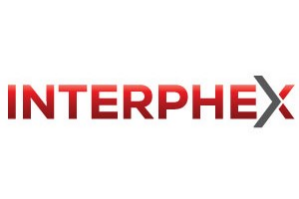Sponsored by Pharmaceutical Technology and BioPharm International
Innovation Stage On-Demand Sessions
Keynote Series: Fresh Challenges Emanating From Emerging Therapies
Keynote Series: Continuous and Modular Manufacturing Advances
Sponsored by Pharmaceutical Technology and BioPharm International
Keynote Series: Emerging Therapies Constriction Points
Sponsored by Pharmaceutical Technology and BioPharm International
Making a Mole Hill Out of a Mountain: An Example of Cleaning Validation Remediation During Commercial Operations Under Consent Decree
A real world look at the planning, execution, and lessons learned associated with the cleaning program remediation of a commercial manufacturing facility while operating under a consent decree. Discussions will include cleaning procedural changes, associated validation requirements, and the logistics of cleaning verification to support parallel manufacturing. Focus areas such a planning, resources, execution, and impacts to critical lot dispensation will be reviewed with emphasis on developing tools for future use. Additionally, the presentation will touch on project reactions to extrinsic critical failures and how planning provided risk mitigation.
The Influence of Novel Parenteral Packaging Components on Fill-Finish Processing
Increasingly challenging drug product delivery requirements necessitate the evolution of parenteral packaging components, which have since given rise to novel elements within these components. Such developments require the drug manufacturer to consider fill-finish related processing in even earlier stages compared to their more familiar counterparts. While many of these new components require altered approaches and modifications to parameters, equipment, and unit operations associated with the fill-finish process, they can also provide opportunities to streamline processes. This can help decrease capital expenditure associated with equipment and cleanroom space. Within this presentation, a review of various new parenteral packaging components will be discussed as it relates not only to their industry value, but also how their introduction into fill-finish processes must be considered and appropriately incorporated for proper scale-up and on-time commercialization of new drug products.
Automation and flexibility in fill-finish lines for highly toxic and biologically hazardous injectable products
In aseptic fill-finish lines, balancing operational flexibility with high-risk products is becoming a crucial factor due to the increasing spread of personalized therapies, biological or biosimilar products and genome-specific therapies. Production facilities may have to comply with BSL-2 or even BSL-3 requirements and at the same time, cito-toxic products (i.e. antiblastic products or antibody-drug conjugates) may require that the entire fill-finish plant has to be qualified with less than 1 ug/m3 maximum exposure concentration (OEB 5). The presentation focuses on the innovative solutions designed and built to face this growing challenge. Starting from the issue of balancing between grade A aseptic area with high containment requirements, analysis follows on how the combination of integrity, pressure cascade, layout design, automated deactivation and washing cycles can reach this challenging goal.
Keynote Series: Big Picture Perspectives - Facilities, Intellectual Property, Regulations and Investment Dollars
Sponsored by Pharmaceutical Technology and BioPharm International
Scalable Solutions for Container Closure Integrity Testing: Planning for the Future – From Laboratory to Automated Inspection
As industry demands associated with container closure integrity testing (CCIT) are becoming more dynamic, solutions that can adapt are more instrumental than ever. These forward-thinking advancements have driven the shift of focus towards modern, deterministic technologies. This presentation will review alternative technology options and data integrity compliance capabilities that are critical due to a wide variety of applications and regulatory requirements. Technology that can accommodate expected and unexpected industry changes provides a proactive, practical, and reliable approach that can continue to be deployed in the field. Solutions for package quality inspection should provide the highest level of control and confidence from start to finish – from the lab to the manufacturing floor.
